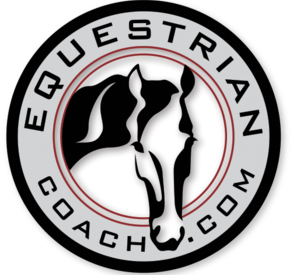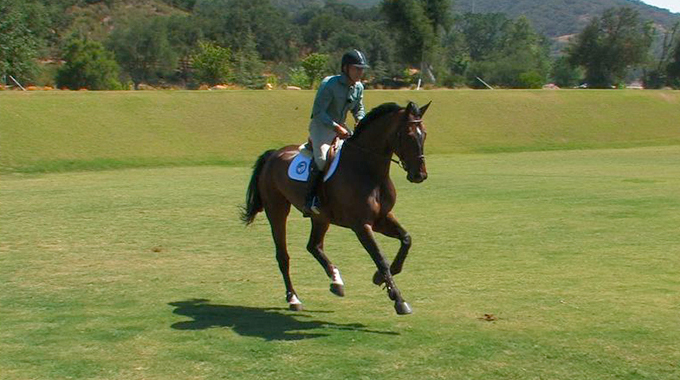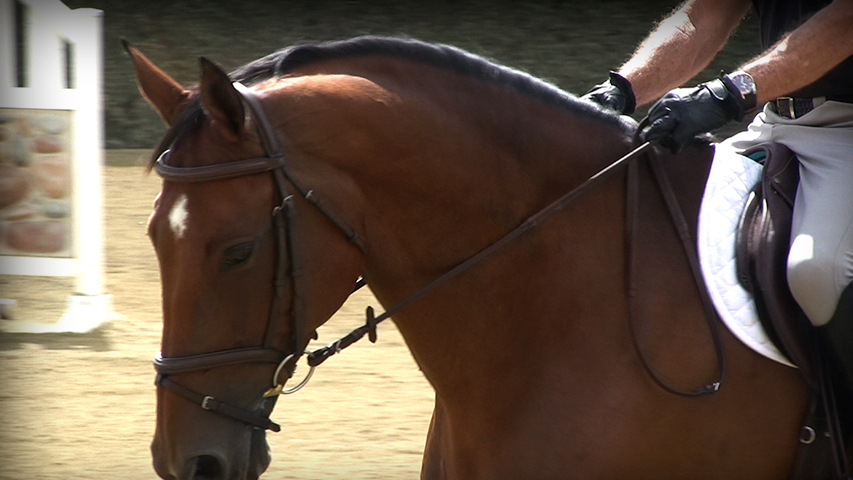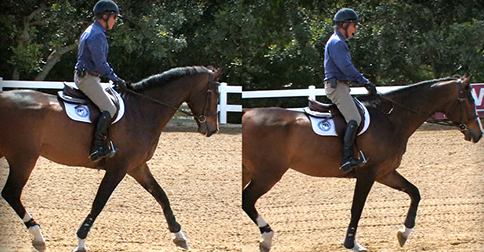Karen Healey
- 26 Mar, 2019
- 0 Comments
- 3 Mins Read
Why It’s Harder to Keep Your Horse Round in the Canter
Submitted by member: aptgirl
I’m having a hard time keeping my horse round at the canter. He’s great at the walk or trot. But as soon as we pick up the canter, he sticks his nose out and his back gets flat. I’m sure I’m doing something wrong, as my trainer doesn’t have the issue (of course). Any exercises you can suggest that will work on this on the flat?
Answer by Karen Healey
The trot has two beats to the rhythm. The diagonal legs work together and usually is a very even gait. It’s much easier to keep steady contact, as there is very little movement of the head, neck, and back. In the canter, which has three beats to the gait, the rider’s arms need to follow the rhythm. As the inside hind leg comes forward and pushes off, there is a natural descent of the head and the neck, similar to a jump. It takes a lot of practice for the rider to learn to go with the canter and not against it. Just as great old school horses learn to jump very flat, they also learn to canter in what I call a “flat line” canter to protect themselves from uneducated hands.
Again, it sounds to me like you’re not fully following the horse. It is not an uncommon problem and I go back to the driving rein to help students learn the connection. The driving rein helps the rider learn relaxation and elasticity as it’s hard to stiffen against the horse with that connection. Most knowledgeable trainers know about the importance of a relaxed elbow, but I have found that the rider can move their elbows all they want, but unless their shoulders are relaxed also, their feel will continue to be stiff. Particularly, if you have a horse with a great bounce to his stride, which is what I’m always striving for, he may be trying to evade being basically, “hit in the mouth.” Riding is really all about timing—when to take and when to give, when to close your leg and when to relax it—and the better your timing, the more your horse will accept and then yield to the hand.
More Learning
Click on the following for blog posts on similar topics:
How to Encourage a Hunter Horse with High Head Carriage to Stretch Down by Geoff Teall
Exercises For A Thoroughbred That Gets Heavy and Strung Out In The Canter by Linda Allen
Tips to Get a Horse Off the Forehand on the Flat and Over Jumps by Jim Wofford
Video Recommendations:
Developing Good Hands
Bernie Traurig
In this topic Bernie discusses the vital role good hands play in the communication between rider and horse. Tactful, sensitive hands that are used with feeling can be developed using the exercises Bernie presents here.
Running Time: 11 minutes and 10 seconds
Riding on the Bit
Bernie Traurig
For some equestrians it is the ultimate goal – to get your horse on the bit and experience that suppleness of poll and jaw, the engagement of the hindquarters, the acceptance of the rider’s hands, that fluid link between horse and rider. In this topic Bernie demonstrates all the different levels of contact with the horse’s mouth and different elevations of the horse’s head and neck that can be considered “on the bit.” He takes into consideration the horse’s conformation and willingness to acquiesce to the required pressure as well as the pit falls of trying to manufacture “on the bit” compliance.
Running Time: 51 minutes and 16 seconds
Fundamentals of Flatwork – Part 3 – Advanced
Bernie Traurig
The Advanced level further illustrates Bernie’s modern, refined and simplified approach. If your goal is a higher level of performance or to achieve a greater brilliance and quality of gait, this video is for you.
Running Time: 51 minutes and 16 seconds
Have Something You Want to Ask Our Panel of Experts?
Ask The Experts is the ultimate way to get help from the top professionals in the equestrian industry without leaving the comfort of your home. This service is available to Monthly, Annual, and Lifetime Members of EquestrianCoach.com.




